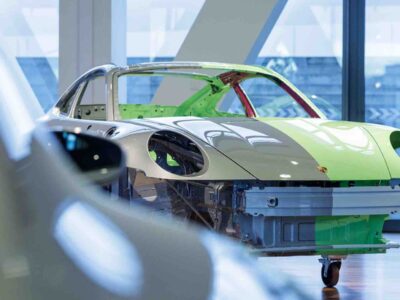In 2009, TIME Magazine published its annual list of the Best Inventions of the Year. It was a prophetic collection of inventions that became staples of society over the next 10 years — smart thermostat, bladeless fan, vertical farms, and tank-bred tuna. Perhaps the most influential item was an electric vehicle, the Nissan LEAF.
Fast forward to more than a decade later, it’s a car that most people take for granted. It’s a bit small and has a less robust battery range than some newbies on the road. Nissan originally designed the LEAF as a compact vehicle, but the 2022 model year turned it into a small, compact SUV. The vehicle does 0–60mph in 7.4 seconds, and in terms of battery capacity, it manages to squeeze a maximum range of just 215 miles out of its 62 kWh battery, making it best for city driving.
However, the car’s current position in the market does not diminish its significance to the automotive industry. The LEAF is a vital part of the modern electric vehicle industry, if not the cornerstone of its beginnings. There were others before it, but the LEAF represented a solution to many automakers’ initial attempts to release EVs.
The industry has attempted to develop EVs since the 1960s. However, none of the cars were viable due to their costs and batteries. The LEAF solved these issues by becoming the first mass-produced EVs to hit the market in 2010. For starters, Nissan supplied it with a 24kWh lithium-ion battery, a fairly new technology. It produced a whopping 125 miles of range, which is laughable nowadays. But, just 10 years earlier, batteries could only muster between 40 and 60 miles.
Despite the groundbreaking technology, Nissan priced the car modestly. While most attempts at electrification — the original Tesla Roadster, for example — would set the average consumer back at least six figures, the LEAF had a sticker price of $32,780. The cost was more reasonable for a piece of cutting-edge automotive technology.
An underappreciated aspect of the LEAF’s rollout was establishing its charging network. Nissan partnered with local governments, electric companies, and municipalities to develop the CHAdeMO charging network. It has become essential to the Japanese electric car market and, as of December 2020, has grown to nearly 30,000 chargers worldwide. The revolutionary idea set the stage for Tesla and GM.
The Nissan LEAF was immensely popular. The car was the number-one EV worldwide for a decade, selling more than 450,000 by 2020 before losing the top spot to the Tesla Model 3.
All told, the LEAF sold more than half a million units and cemented itself as one of the most important vehicles in the industry.
While it doesn’t seem as shiny as it once did against the Teslas of the world, the LEAF is a pioneer. Nissan has made minor attempts to modernize it, but its future is unknown as the automaker rolls out its newer electric lineup with the kick-off of the Ariya. Whether or not it remains in production is still to be seen, but the car is a vital part of the history and development of the now energetic EV industry.





